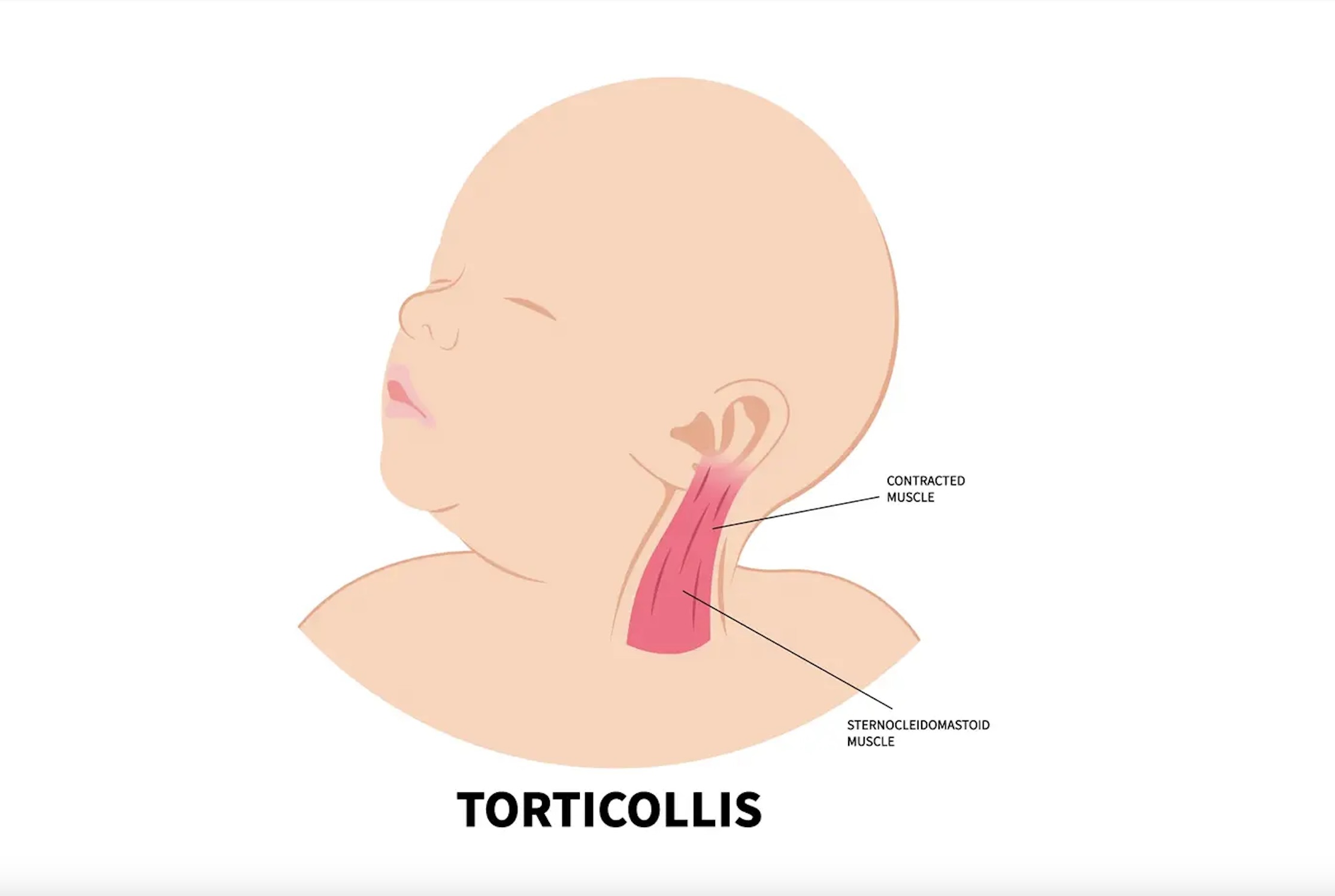Torticollis: Symptoms, Causes, Treatment
What are the symptoms of torticollis?
Torticollis, also known as wry neck, is a condition characterized by a twisted or tilted neck. The primary symptom of torticollis is the involuntary contraction of the neck muscles, which causes the head to tilt to one side and rotate to the opposite side. Other symptoms may include:
- Neck pain: The twisted position of the neck muscles can cause pain or discomfort in the neck area.
- Limited range of motion: Individuals with torticollis may have difficulty moving their head and neck freely, especially in the direction opposite to the tilt.
- Headache: Chronic neck muscle tension and the abnormal head position can lead to headaches, especially in the back of the head.
- Shoulder elevation: In some cases, the shoulder on the side of the head tilt may elevate slightly.
- Neck stiffness: The neck muscles may feel tight and stiff, especially when trying to move the head to a neutral position.
- Muscle spasms: Spasms or involuntary contractions of the neck muscles may occur, causing further discomfort and difficulty in moving the head.
- Facial asymmetry: In infants with congenital torticollis, the condition may cause asymmetry in the face, with one side appearing flatter than the other.
It’s important to note that the symptoms of torticollis can vary in severity and may worsen with stress or fatigue. In some cases, torticollis may be temporary and resolve on its own, while in other cases, it may be chronic and require treatment. If you or your child are experiencing symptoms of torticollis, it’s important to consult with a healthcare provider for an accurate diagnosis and appropriate management.
What are the causes of torticollis?
Torticollis can be classified into two main types: congenital and acquired. The causes of torticollis can vary depending on the type:
- Congenital torticollis: This type of torticollis is present at birth and is believed to be caused by a variety of factors, including:
- Muscular abnormalities: Tightness or shortening of the sternocleidomastoid muscle, which runs from the base of the skull to the collarbone, is the most common cause of congenital torticollis. This tightness can result from abnormal positioning in the womb or trauma during childbirth.
- Positional factors: Prolonged or repeated positioning of the head in a certain way, such as sleeping with the head consistently turned to one side, can lead to muscle tightness and torticollis.
- Birth trauma: Injury to the neck muscles or nerves during childbirth can lead to torticollis.
- Acquired torticollis: This type of torticollis develops after birth and can have various causes, including:
- Muscle spasms or inflammation: Conditions such as cervical dystonia (a neurological movement disorder), muscle strain, or injury can lead to muscle spasms or inflammation in the neck muscles, causing torticollis.
- Infection: Infections of the head or neck, such as otitis media (middle ear infection) or retropharyngeal abscess, can cause torticollis.
- Injury: Trauma to the head, neck, or shoulders can lead to torticollis.
- Neurological disorders: Conditions such as brain tumors, stroke, or Parkinson’s disease can affect the nerves that control neck muscles, leading to torticollis.
- Medications: Certain medications, such as antipsychotics or dopamine receptor-blocking drugs, can cause muscle spasms or stiffness that may result in torticollis.
In some cases, the exact cause of torticollis may not be known. Treatment for torticollis depends on the underlying cause and may include physical therapy, medications, botulinum toxin injections, or, in severe cases, surgery. It’s important to consult with a healthcare provider for an accurate diagnosis and appropriate treatment plan if you or your child are experiencing symptoms of torticollis.
What is the treatment for torticollis?
The treatment for torticollis depends on the underlying cause and the severity of symptoms. Treatment options may include:
- Physical therapy: Physical therapy is often recommended for both congenital and acquired torticollis. Specific exercises and stretches can help improve neck muscle strength and range of motion. Physical therapy may also include techniques to improve posture and reduce muscle spasms.
- Medications: In some cases, medications such as muscle relaxants or botulinum toxin injections (Botox) may be prescribed to help reduce muscle spasms and improve neck movement. Pain relievers may also be recommended to alleviate discomfort.
- Heat or cold therapy: Applying heat or cold packs to the affected area can help reduce muscle stiffness and relieve pain.
- Neck braces or collars: In some cases, wearing a neck brace or collar for a short period of time may help support the neck and reduce muscle strain. However, prolonged use of a neck brace is generally not recommended, as it can lead to muscle weakness and stiffness.
- Surgery: In severe cases of torticollis that do not respond to other treatments, surgery may be considered. Surgical options may include lengthening or releasing the tight neck muscles, or in some cases, adjusting the position of the bones in the neck.
- Botox injections: Botulinum toxin injections can temporarily weaken the muscles causing the abnormal head position, allowing the neck muscles to relax and the head to return to a more normal position.
- Cervical traction: Cervical traction is a technique that involves gently stretching the neck to relieve pressure on the cervical spine and reduce muscle spasms.
The appropriate treatment for torticollis will depend on the specific circumstances of each individual case. It’s important for individuals with torticollis to work closely with their healthcare provider to develop a treatment plan that addresses their specific needs and goals.




